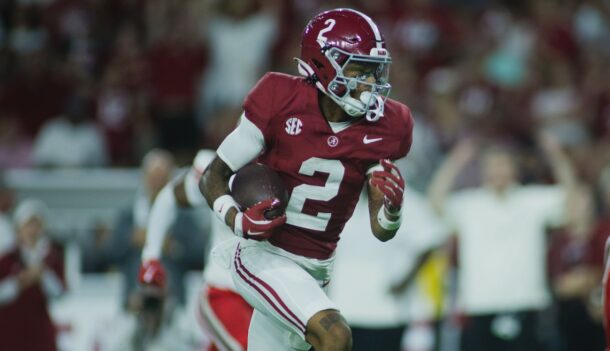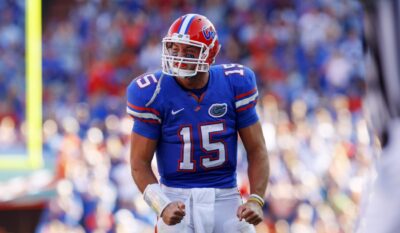Tre Mason.
College football’s hottest player down the 2013 stretch is now playing on Sundays, and Auburn has to find a way to replace his incredible production.
Had Auburn been projected as a Top 5 team when the 2013 season began, Mason would have been in the Heisman Trophy conversation much earlier. Still, as Auburn ascended up the ranks, so did Mason’s status as one of the premier players in the country. He was one of six Heisman finalists invited to New York.
The way he sliced and diced Mizzou’s defense in Atlanta was something special. The junior rushed for an eye-popping 304 yards against a Missouri defense that was ranked 14th in the nation against the run. That easily broke the previous SEC title game rushing record of 201 yards set by LSU’s Justin Vincent in 2003.
But Mason’s productivity wasn’t just limited to the SEC Championship Game. In 13 of the 14 games last year, Mason rushed for 70 yards or more. Including the SEC title tilt at the Georgia Dome and BCS National Championship Game, Mason eclipsed the 100-yard barrier in nine games. Seven of those nine games were against BCS teams, including 164 yards against Alabama and 197 yards against Florida State, which were ranked No. 7 and No. 18 in the nation against the run respectively. That’s production.
Mason electrified college football’s toughest division, rushing for 1,835 yards, averaging 5.7 yards a carry and 129.7 a game. Cameron Artis-Payne and Corey Grant, the two backs figured to vie for Mason’s job, have the enormous task of filling No. 21’s shoes. Is it feasible for Artis-Payne or Grant to replace Mason’s 2013 numbers? Can Artis-Payne and Grant even replace that much production? Will they have to? Can either become the workhorse that Mason evolved into? Mason carried the ball an astonishing 317 times, which was the fifth most in college football and paced the SEC.
Auburn’s thunder and lightning combo will evolve throughout the season. Artis-Payne is a between-the-tackles type bully runner, while Grant is a burner who can turn the corner in a hurry. The differences in style complement one another. Early on, Malzahn could use both of them in situations that cater to each of their strengths until one emerges as the go-to back the offense desires. If 2014 is anything like 2013, the deeper into the season, the greater the chance for Malzahn to stick with one primary back, using the other in more situational opportunities. Don’t forget about true freshman Roc Thomas and redshirt freshman Peyton Barber. Thomas is a 5-foot-10, 193 pound back with a beautiful combination of speed and power. He may be too talented to be on the sideline this fall. The coaching staff was raving about Barber all spring, and it’s a shame he was injured in the spring game.
Regardless of which back emerges, Auburn’s offensive line is ready to push around more defenders. Before losing guard Alex Kozan to a season-ending back injury, the Tigers’ O-line was one of the very best in college football. Replacing Greg Robinson would be challenging, and replacing Kozan, along with Robinson, is even more challenging. Cohesion, chemistry, and the ability to stay healthy are musts for the remaining pieces of the offensive line to be successful. More responsibility now falls on veteran center Reese Dismukes with Kozan lost for the season.
Aside from Gus Malzhan’s play calling, perhaps the key component to it all is quarterback Nick Marshall. The 1,000-yard rusher also punched in 12 touchdowns last season. Marshall’s dynamic ability and athleticism is the catalyst for one of the country’s top rushing attacks.
Worked in online, print, TV and radio. Bobby Valentine once wore a pair of my socks for 8 hours. In an awkward exchange, he handed them back to me to which they were immediately deposited in a trash can.







